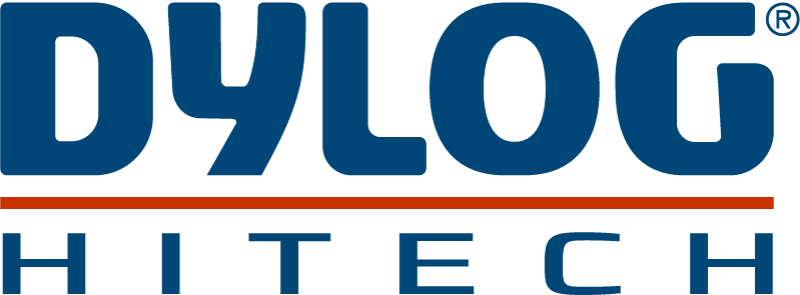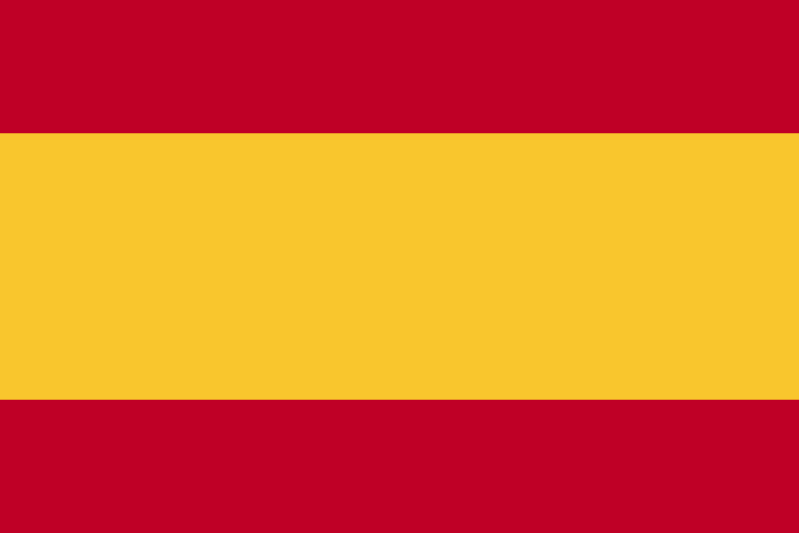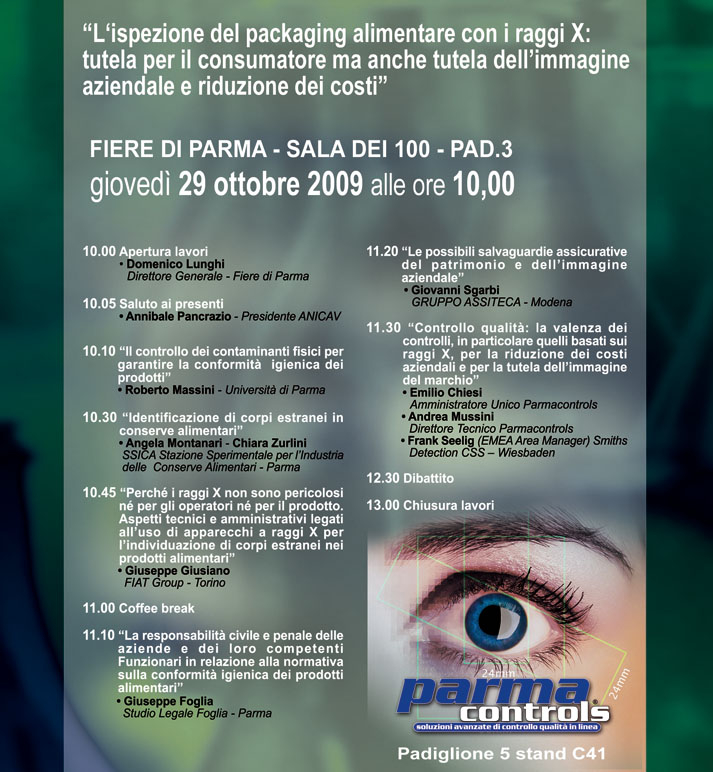CibusTec 2009 Conference
A survey carried out in Great Britain in the 1988-1994 period points out that 41% of all claims for damages caused by the presence of foreign bodies in food products were based on the detection of metal, glass, and stones. Another survey, carried out in 2008, shows that in Italy 9 % of the cases of contaminants detection in food products were related to heavy metals and other “foreign bodies”. However not all the consumers that have such a bad surprise dial the customer care service number or complain by writing to the producers: the estimated ratio per regularly filed complaint is to 1 to 20. Consumers instead are more prone to change their consumption habits, effect which, in cases like this, propagates itself by word of mouth from people to people and hence the producing companies incur economic damage due to decreased sales and damage to their corporate image. An even worse damage may be incurred in case the news of the foreign body detection is published on the newspapers. So how can companies protect themselves against these evil events? Parmacontrols Srl, an Italian company specializing in the manufacture of Quality Control and Inspection Systems for food packaging and bottling lines, investigated this issue during the recent 2009 edition of Cibus Tec by organizing a seminar with the title “Food packaging x-ray inspection: cutting costs while safeguarding both consumers and corporate image”. The aim of the seminar was investigating all of the technical, scientific, legal and insurance aspects as well as the economic aspects related to the use of the X-Ray technology by companies. “Food products X-ray inspection is an issue pertaining to Quality Control and food Safety which is still openly disregarded and greatly undervalued, and which is also improperly feared since it is based on the proposal of a new technology” stated dr. Emilio Chiesi, Parmacontrols General Manager. Prof. Massini, scientific head of the SITEIA laboratory and full Professor of Food Science and Technology at the University of Parma, clarified that by quality control it is to be meant the whole set of procedures implemented within a company in the aim of either preventing or minimizing the risk of producing a product being not suitable for or even hazardous for human consumption. This means defining and implementing specific analytical processes being apt to detect risks and hazards within the productive process, by identifying hazards and critical control points and adopting the necessary corrective actions (HACCP system). The professor underlined, by mentioning facts and figures, that the technology based on X-ray inspection currently is the best one as to efficacy and efficiency. It can detect not only ferrous metals, for the detection of which the proven metal detector technique can be applied but which is very limited, but also non ferrous metals and radio-opaque foreign bodies such as glass, stones, bones, and dense plastics and rubber. “The probability of risk cannot be completely eliminated” stated prof. Massini, “hence the best solution – he continued - is that of adopting the most advanced and economically compatible available techniques while finding the best compromise between the machine sensitivity and the consequent false scrap, because the main objective is guaranteeing the continuous operation of the machine rather than detecting tiny foreign bodies. “The x-ray radiation exposure for a food product being processed through an ordinary x-ray inspection machinery is exactly the same as the radiation exposure we undergo during a one-hour flight from Milan to London, while peacefully having the snacks and the drinks we are offered by the flight attendants: we do not run any risk either for us or for what we eat, the food we eat is not hazardous …” declared Giuseppe Giusiano, technical engineer for Deposito Avogadro Srl, a company belonging to the Gruppo Fiat specializing in radiation protection and certified pursuant to the Italian Law. Giusiano also pointed out that the current X-ray inspection machines are equipped with such control and inspection systems that do not entail any risks for the personnel and are not hazardous for the finished product. In Italy, the legislative decree 230/95 regulates the field of application of the X-ray inspection machines in the food industry. Pursuant to the Decree entrepreneurs are bound to certify the machine through a third body, specializing in radiation protection and registered with the relevant National Registry of Radiation Protection, and to inform the competent bodies about the presence and the use of the machines. Furthermore, stated Giusiano, pursuant to the decree Entrepreneurs are not bound to declare on the product labels that X-Ray inspection machines have been used, for the very reason that the absorbed radiation dose is slightly greater than the level of radiation present in nature. Label declaration is only statutory for the products obtained from foodstuffs that are subjected to radiation sterilization, whereby huge potencies are used, that is potencies that are not even comparable to those involved in X-Ray inspection applied to airport security scanning or food products inspection. Then avv. Giuseppe Foglia from Parma and dr. Giovanni Sgarbi from Assiteca BSA dealt with the issue of entrepreneurs’ liability and the relevant insurance policies to cover both the consumers that have incurred damage and the entrepreneurs’ own companies, brands, and employees. Entrepreneurs who prove in a trial that “they have done everything possible” to avert inflicting damage on the final consumers will safeguard themselves both with respect to the amount of damage compensation and with respect to any possible fraud or sabotage to the detriment of their companies. The X-Ray inspection machines can detect millimetre-sized contaminants and installing them thus means for the companies protecting the consumers’ health, qualifying and protecting their own brands better than with any other technologies, and hence guaranteeing their own turnover. For this reason dr. Emilio Chiesi presented an American marketing study which demonstrates and quantifies the cost of missed sales due to foreign body detection, by reporting real data in a dedicated table drawn in order to scientifically determine such a “hidden” cost. This study easily proves how instead of incurring these “hidden costs” it is more convenient to pay for the amortization related to the purchase of an X-ray inspection system. And this most of all because entrepreneurs do equip themselves in order to avert what dr. Chiesi defines as the “BIG ONE”, that is that exceptional incident, but still possible, for which the detection of a foreign body becomes such a serious and important issue as to be published in the newspapers, by thus dramatically damaging their companies corporate image and entailing disproportionately greater costs than those entailed by the purchase of an X-Ray inspection system. Founded in 1992, Parmacontrols Srl is since then acting on the field of inspection systems for the packaging area of the following sectors: food, bottling, pharmaceutical, and chemical, can making, metal, glass, and plastic containers and relevant closures manufacturing. Since 2004 Parmacontrols has been the exclusive distributor in Italy, Eastern Europe and Middle East, for the inspection units manufactured by Smiths Detection, a world leader as to X-ray inspection both for the food products inspection and for the airport security scanning (passenger’s luggage inspection).
A video of the seminar is now available on DVD. If you wish to receive it, please apply to Parmacontrols Srl, Via Mantova 49/A, 43100 Parma - tel. 0521775064, email sales@parmacontrols.it.







